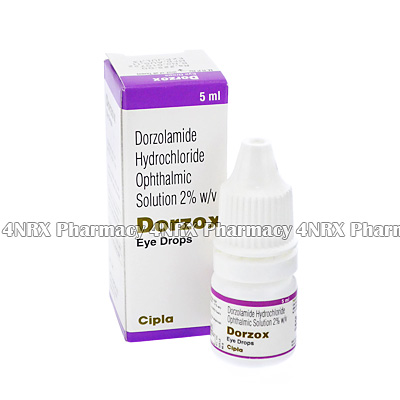 |
Home  Eyes Eyes  Dorzox Eye Drops (Dorzolamide) Dorzox Eye Drops (Dorzolamide) |
|
|||||||||
|
Dorzox Eye Drops (Dorzolamide)
What is Dorzox Eye Drops (Dorzolamide) used for? Dorzox Eye Drops (Dorzolamide) are used to treat high pressure in the eye caused by glaucoma or other eye diseases. These eye drops are proven to alleviate these conditions by blocking the actions of the enzyme responsible for creating the fluid which causes high pressure to occur within the eye. Alleviating eye pressure reduces the risk of blindness. How should I use Dorzox Eye Drops (Dorzolamide)? Dorzox Eye Drops (Dorzolamide) are applied directly to the affected eye(s) as directed by your physician. To apply the drops, the patient should first look upwards and tilt their head back. They may then form a pouch with the lower eyelid by pulling it down. The dropper can then be held directly over the eye and the drops can be applied. Usually, patients are instructed to apply 1 drop to the affected eye|(s) 3 times daily, however, the dosage varies for each patient and you should only take this medication as directed by your physician. What are the side effects of Dorzox Eye Drops (Dorzolamide)? Side effects which may occur when using Dorzox Eye Drops (Dorzolamide) include stinging in the eyes, blurred vision, sore throat, sensitivity to light, and headaches. You should consult your physician immediately if you notice any of the following more serious side effects:
Please Note Strictly follow all instructions provided to you by your physician or pharmacist while using Dorzox Eye Drops (Dorzolamide). Optimum and safe dosage can differ based on the patient and the condition being treated. As this medication may be unsafe for certain patients, it is essential you always inform your physician if you are pregnant or breastfeeding, as well as if you have any allergies, other illnesses, ongoing health conditions (especially kidney or liver disorders), and if you are taking any other form of medication, supplements, or herbal products. Immediately seek emergency medical care if you have an allergic or hypersensitive reaction. Common signs of a reaction include hives, swelling, skin rashes, chest pains, as well as trouble breathing or swallow. 
|
|||||||||||||||||